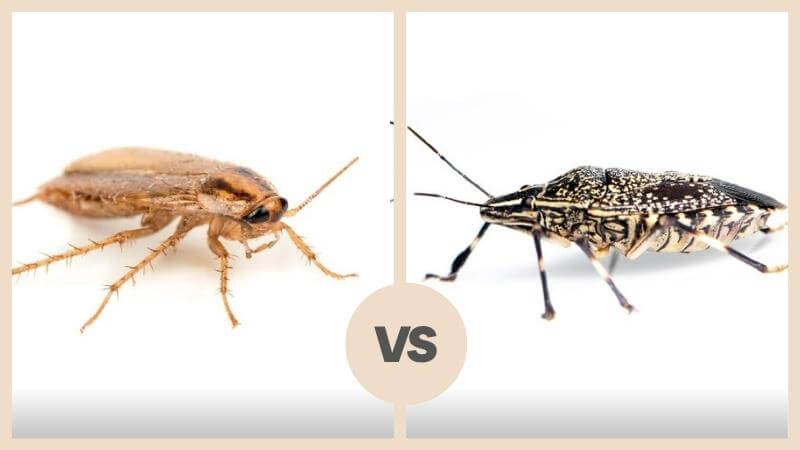Cockroach Vs Stink Bug

Both cockroaches and stink bugs are commonly found in various parts of the world. Still, they have distinct characteristics and impacts on human environments. While they might be placed under the broad umbrella of ‘unwanted house pests,’ understanding their differences can help manage and control their populations effectively.
Cockroach vs Stink Bug Table
| Attribute | Cockroach | Stink Bug |
|---|---|---|
| Classification | Order Blattodea | Family Pentatomidae, Order Hemiptera |
| Physical Appearance | Oval, flat body, long antennae | Shield-shaped, shorter antennae |
| Color Variants | Reddish-brown to black | Mottled brown or green |
| Diet | Omnivore (incl. organic matter & food) | Primarily plant-based |
| Active Time | Nocturnal | Mainly nocturnal but can be diurnal |
| Impact on Humans | Potential pathogen transmission, allergens | Nuisance due to odor, crop damage |
| Control Measures | Sanitation, baits, insecticides | Insecticidal soaps, natural predators |
Origin & Classification
Cockroaches are ancient creatures, with fossil records showing their existence dating back at least 320 million years. They belong to the order Blattodea and are found worldwide, with approximately 4,600 species.
On the other hand, stink bugs, or shield bugs, belong to the family Pentatomidae within the order Hemiptera. They’re named for the unpleasant odor they produce as a defense mechanism. They are relatively newer in evolutionary terms than cockroaches but still have about 220 million years under their belt.

Physical Characteristics
Cockroaches typically have an oval-shaped, flat body with long antennae and a shiny appearance. Their color varies from reddish-brown to black, depending on the species. For instance, the German cockroach is light brown, while the American cockroach is darker in color.
Stink bugs, meanwhile, have a distinctive shield-like shape. They have a marbled or mottled appearance, usually in shades of brown or green. Their legs and antennae are shorter than those of cockroaches.
Habitat & Behavior
Cockroaches are nocturnal creatures and often hide in dark, warm places during the day. They are omnivores and are known to consume a variety of food sources, including organic matter and leftovers.
Stink bugs are also generally nocturnal but can be active during the day. They primarily feed on plants, particularly fruits, and are considered agricultural pests in many regions.

Impact on Humans
Cockroaches can potentially transmit pathogens because they frequently scavenge on decaying matter and waste. Their presence is often associated with unsanitary conditions. They also produce allergens that can exacerbate asthma and allergies in sensitive individuals.
Stink bugs, conversely, don’t pose direct health threats to humans. However, they can be a nuisance due to the foul smell they release when threatened or squished. They are more of an agricultural concern, causing damage to crops.
Control Measures
Both pests require different control strategies. Good sanitation practices, sealing off entry points, and using baits and insecticides can be effective for cockroaches.
Using insecticidal soaps, natural predators like the parasitic wasp, and sealing homes to prevent entry during colder months can be beneficial for stink bugs.
Conclusion
In conclusion, cockroaches and stink bugs can be unwelcome guests in homes. Still, they have vastly different characteristics, behaviors, and impacts. Recognizing these differences can be crucial for their management and control.
Knowledge is key to ensuring a pest-free environment, whether you’re dealing with the ancient cockroach or the pungent stink bug.

James E. Butkovich, Pest control maven with a knack for eco-friendly & Chemical solutions. Blogger with a mission to make homes pest-free, one post at a time.